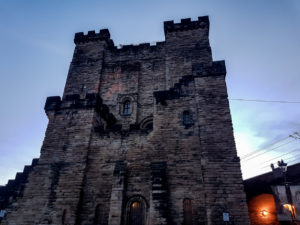The Stanton Drew stone circles are just outside the village of Stanton Drew in the English county of Somerset. The largest stone circle is the Great Circle, 113 meters in diameter and the second largest stone circle in Britain (after Avebury); it is considered to be one of the largest Neolithic monuments to have been built. The date of construction is not known but is thought to be between 3000 and 2000 BCE, which places it in the Late Neolithic to Early Bronze Age. It was made a scheduled monument in 1982.
The Great Circle was surrounded by a ditch and is accompanied by smaller stone circles to the northeast and southwest. There is also a group of three stones, known as The Cove, in the garden of the local pub. Slightly further from the Great Circle is a single stone, known as Hautville’s Quoit. Some of the stones are still vertical, but the majority are now recumbent, and some are no longer present.
Being a henge and stone circle site, astronomical alignments are a common theory to explain the positioning of the stones at Stanton Drew. Similarly, there are less well-evidenced theories relating to ley lines.









